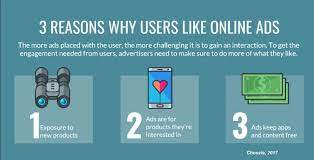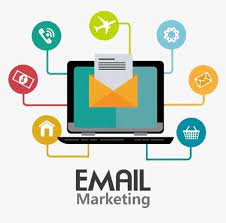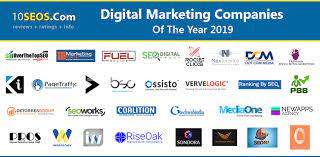Title: The Best Online Advertising Strategies to Boost Your Business
Introduction:
In today’s digital age, online advertising has become a crucial component of any successful marketing strategy. With millions of potential customers just a click away, businesses have the opportunity to reach their target audience like never before. However, with so many options available, it can be overwhelming to determine the best online advertising strategies. In this article, we will explore some of the most effective methods that can help you achieve your business goals.
Search Engine Marketing (SEM):
Search Engine Marketing involves paid advertisements that appear on search engine results pages (SERPs). By bidding on relevant keywords, businesses can display their ads when users search for specific terms. The advantage of SEM is that it allows you to target users actively searching for products or services similar to yours. Google Ads is a popular platform for SEM campaigns.
Social Media Advertising:
With billions of active users worldwide, social media platforms like Facebook, Instagram, Twitter, and LinkedIn have become powerful advertising channels. Social media advertising offers precise targeting options based on demographics, interests, and behaviors. It enables businesses to create visually appealing ads and engage with their audience directly.
Display Advertising:
Display advertising involves placing visual ads on third-party websites or apps. These ads can be in the form of banners, videos, or interactive elements. Display advertising allows you to reach a wide audience and increase brand awareness. Google Display Network and programmatic advertising platforms are popular choices for display campaigns.
Content Marketing:
Content marketing focuses on creating valuable and relevant content that attracts and engages your target audience. This strategy includes blog posts, articles, videos, infographics, and more. By providing useful information and building trust with your audience through content marketing efforts, you can establish yourself as an authority in your industry while subtly promoting your products or services.
Influencer Marketing:
Influencer marketing leverages individuals who have a significant following and influence in a particular niche. By collaborating with influencers, businesses can tap into their loyal audience and benefit from their endorsement. Influencer marketing can be highly effective in reaching a specific target market and generating authentic brand awareness.
Remarketing:
Remarketing involves targeting users who have previously interacted with your website or shown interest in your products or services. By displaying ads to these users across various platforms, you can remind them of your brand and encourage them to convert. Remarketing campaigns can significantly increase conversion rates and ROI.
Conclusion:
The world of online advertising offers a multitude of options for businesses to reach their target audience effectively. The best strategy depends on your specific goals, target market, and budget. It is essential to continuously monitor and optimize your campaigns to ensure maximum results. By leveraging the power of search engines, social media platforms, engaging content, influencers, and remarketing techniques, you can enhance your online presence, drive traffic to your website, and ultimately boost your business’s success in the digital realm.
Frequently Asked Questions: Exploring the Best Online Advertising Options in the UK
- What is the best online advertising platform?
- How much does online advertising cost?
- What are the advantages of online advertising?
- How can I measure the success of my online ads?
- How do I create effective online ads?
- What are the different types of online advertising available?
What is the best online advertising platform?
Determining the best online advertising platform depends on various factors, including your business goals, target audience, budget, and industry. Here are some popular platforms that offer effective advertising solutions:
- Google Ads: As the largest search engine globally, Google Ads allows businesses to display ads on search engine results pages (SERPs) and across its extensive network of partner websites. It offers various ad formats and targeting options based on keywords, demographics, and user behavior.
- Facebook Ads: With over 2.8 billion monthly active users, Facebook Ads provides a powerful platform for reaching a wide range of audiences. It offers precise targeting options based on demographics, interests, behaviors, and even custom audiences. Facebook’s extensive ad formats cater to different campaign objectives.
- Instagram Ads: As a part of Facebook’s advertising ecosystem, Instagram allows businesses to reach its visually-oriented user base through photo and video ads. With over 1 billion active users worldwide, Instagram Ads can be highly effective for brands aiming to engage with younger demographics or showcase visually appealing products.
- LinkedIn Ads: LinkedIn is the leading professional networking platform with more than 774 million members worldwide. It offers targeted advertising options for businesses looking to reach professionals in specific industries or job roles. LinkedIn ads can be particularly beneficial for B2B marketing campaigns.
- Twitter Ads: Twitter provides an advertising platform that allows businesses to promote their content through tweets or display ads across the platform’s vast user base. With its real-time nature and hashtag targeting capabilities, Twitter can be effective for creating brand awareness or driving engagement.
- YouTube Ads: As the world’s largest video-sharing platform with billions of monthly users, YouTube offers various ad formats such as skippable video ads, non-skippable ads, bumper ads, and more. YouTube ads can help businesses reach a wide audience while leveraging the power of video content.
It’s important to note that each platform has its own strengths and target audience. The best online advertising platform for your business will depend on your specific marketing objectives, target audience demographics, and budget. It is often beneficial to test different platforms and analyze their performance to determine which one aligns best with your goals.
How much does online advertising cost?
The cost of online advertising can vary significantly depending on several factors, including the platform you choose, the targeting options you select, the competitiveness of your industry, and the goals of your campaign. Here are some common pricing models for online advertising:
- Pay-Per-Click (PPC): With PPC advertising, you only pay when someone clicks on your ad. The cost per click (CPC) can range from a few cents to several dollars, depending on factors like keyword competition and ad quality. Platforms like Google Ads and Bing Ads typically use this model.
- Cost-Per-Thousand-Impressions (CPM): CPM pricing charges you for every thousand times your ad is displayed, regardless of whether users click on it or not. CPM rates can vary widely based on the platform, audience targeting options, and ad format.
- Cost-Per-Action (CPA): CPA pricing means you only pay when a specific action is taken by a user, such as making a purchase or filling out a form. The cost per action can vary greatly depending on the industry and the complexity of the desired action.
- Fixed Pricing: Some online advertising opportunities offer fixed pricing based on factors like ad placement or sponsorship deals. This option allows for more predictability in terms of costs but may require negotiation with publishers or platforms directly.
It’s important to note that there is no one-size-fits-all answer to how much online advertising costs as it depends on various factors specific to each business and campaign. It’s recommended to set a budget based on your goals and test different platforms and strategies to find what works best for your business while keeping an eye on return on investment (ROI).
What are the advantages of online advertising?
Online advertising offers numerous advantages for businesses. Here are some of the key benefits:
- Wide Reach: Online advertising allows businesses to reach a vast audience across the globe. With billions of people using the internet daily, you have the potential to connect with customers from different geographical locations, increasing your brand’s visibility and reach.
- Targeted Audience: One of the significant advantages of online advertising is the ability to target specific demographics, interests, and behaviours. Platforms like social media and search engines provide advanced targeting options, enabling you to tailor your ads to reach your ideal customers. This precision targeting increases the chances of reaching people who are more likely to be interested in your products or services.
- Cost-Effective: Online advertising can be cost-effective compared to traditional forms of advertising such as TV or print media. Many online platforms offer flexible budgeting options, allowing businesses with different budget sizes to participate in digital marketing campaigns. Additionally, you have control over how much you spend and can track your return on investment (ROI) more accurately.
- Measurable Results: Unlike traditional advertising methods where it’s challenging to measure success accurately, online advertising provides detailed analytics and reporting tools. You can track various metrics such as impressions, clicks, conversions, and engagement rates in real-time. This data allows you to evaluate the performance of your campaigns and make data-driven decisions for optimization.
- Flexibility and Customization: Online advertising offers flexibility in terms of ad formats and customization options. You can choose from various formats such as text ads, display banners, videos, sponsored content, or interactive elements based on your campaign objectives and target audience preferences. Additionally, you can modify your ads during a campaign if they’re not generating desired results.
- Enhanced Brand Awareness: With online advertising, you have the opportunity to increase brand awareness by consistently exposing your brand message to a wide audience. Through strategic ad placements on popular websites or social media platforms, you can create a strong brand presence and improve brand recall among your target audience.
- Immediate Results: Online advertising campaigns can generate immediate results. Unlike traditional methods that may take time to yield outcomes, online ads can start driving traffic to your website or generating leads as soon as they go live. This real-time response allows for quicker adjustments and optimization of your campaigns.
In conclusion, online advertising offers businesses a powerful platform to reach a vast audience, target specific demographics, and achieve measurable results. With its cost-effectiveness, flexibility, and ability to enhance brand awareness, online advertising has become an indispensable tool for businesses looking to thrive in the digital landscape.
How can I measure the success of my online ads?
Measuring the success of your online ads is crucial to understand their effectiveness and make informed decisions about your advertising strategy. Here are some key metrics and methods you can use to measure the success of your online ads:
- Click-Through Rate (CTR): CTR measures the percentage of people who click on your ad after seeing it. It helps gauge how engaging and compelling your ad is to your target audience. A higher CTR generally indicates a more successful ad.
- Conversion Rate: Conversion rate measures the percentage of users who complete a desired action, such as making a purchase, signing up for a newsletter, or filling out a form after clicking on your ad. It helps determine how well your ad is driving actual results and achieving your business goals.
- Return on Investment (ROI): ROI calculates the profitability of your advertising campaigns by comparing the revenue generated from those campaigns to the cost incurred. By tracking the revenue attributed to specific ads or campaigns, you can assess whether they are providing a positive return on investment.
- Cost per Acquisition (CPA): CPA measures how much it costs you, on average, to acquire a new customer or lead through your online ads. It helps evaluate the efficiency of your campaigns and allows you to optimize them for better cost-effectiveness.
- Engagement Metrics: Depending on the platform, engagement metrics can include likes, comments, shares, video views, or time spent on page/site. These metrics provide insights into how well your ad resonates with users and generates interaction with your brand.
- Website Analytics: Utilize web analytics tools like Google Analytics to track user behavior after clicking on an ad. Analyze metrics such as bounce rate, average session duration, and pages per session to assess if users are engaging with your website effectively.
- A/B Testing: Conducting A/B tests involves creating multiple versions of an ad and comparing their performance against each other by splitting traffic between them. This method helps identify which ad variations have a more significant impact on your desired metrics.
Remember, it’s essential to set clear objectives and define key performance indicators (KPIs) before launching your online ads. Regularly monitor and analyze these metrics to make data-driven decisions and optimize your campaigns for better results.
How do I create effective online ads?
Creating effective online ads requires careful planning and execution. Here are some key steps to help you create ads that capture attention and drive results:
- Define your goals: Clearly identify what you want to achieve with your online ads. Is it to increase brand awareness, drive website traffic, generate leads, or boost sales? Having specific goals will guide your ad creation process.
- Know your target audience: Understand who your ideal customers are, their demographics, interests, and online behaviors. This knowledge will help you tailor your ad content and targeting to resonate with them effectively.
- Craft compelling headlines: Grab attention with a catchy headline that addresses a pain point or offers a solution. Make it concise, clear, and compelling enough to entice users to read further.
- Focus on benefits: Highlight the benefits of your product or service rather than just listing features. Show users how your offering can solve their problems or improve their lives.
- Use captivating visuals: Choose high-quality images or videos that are visually appealing and relevant to your message. Visuals should grab attention and help convey the essence of your brand or product.
- Write persuasive ad copy: Craft concise yet persuasive copy that clearly communicates the value proposition of your offering. Use strong calls-to-action (CTAs) to prompt users to take the desired action.
- Tailor ads for different platforms: Each advertising platform has its own specifications and best practices for ad formats (e.g., text-based ads, display banners, video ads). Customize your ad creatives accordingly for optimal performance on each platform.
- Optimize for mobile devices: With a significant portion of internet users accessing content through mobile devices, ensure that your ads are mobile-friendly and load quickly on smartphones and tablets.
- Test different variations: Experiment with different ad elements such as headlines, visuals, copy variations, CTAs, and targeting options to see what resonates best with your audience. A/B testing can help you identify the most effective combinations.
- Monitor and analyze performance: Regularly track the performance of your ads using analytics tools provided by the advertising platforms. Analyze metrics such as click-through rates, conversions, and return on investment (ROI). Use this data to optimize your ads further and make informed decisions for future campaigns.
Remember, creating effective online ads is an ongoing process. Continuously refine and iterate your ad campaigns based on audience feedback and performance data to achieve the best results over time.
What are the different types of online advertising available?
There are several different types of online advertising available to businesses. Here are some of the most common ones:
- Search Engine Marketing (SEM): This involves placing paid advertisements on search engine results pages (SERPs). Ads appear when users search for specific keywords related to your products or services. Google Ads is a popular platform for SEM campaigns.
- Display Advertising: Display ads are visual advertisements that appear on third-party websites or apps. They can be in the form of banners, videos, or interactive elements. Display advertising helps increase brand visibility and reach a wide audience.
- Social Media Advertising: Social media platforms like Facebook, Instagram, Twitter, and LinkedIn offer advertising options to businesses. These platforms allow precise targeting based on demographics, interests, and behaviors, making it easier to reach your desired audience.
- Native Advertising: Native ads blend seamlessly with the content of a website or app, making them less intrusive and more engaging for users. They match the style and format of the platform they appear on while promoting a product or service subtly.
- Video Advertising: Video ads are short promotional videos that can be displayed before, during, or after online video content. Platforms like YouTube and social media networks provide opportunities for businesses to showcase their products or services through video advertising.
- Content Marketing: Content marketing involves creating valuable and relevant content such as blog posts, articles, videos, infographics, and more to attract and engage your target audience. It focuses on providing useful information while subtly promoting your brand.
- Influencer Marketing: Influencer marketing leverages individuals with a significant following and influence in a particular niche. By collaborating with influencers who align with your brand values, you can tap into their loyal audience and benefit from their endorsement.
- Remarketing: Remarketing targets users who have previously interacted with your website or shown interest in your products or services. By displaying ads to these users across various platforms, you can remind them of your brand and encourage them to convert.
- Email Marketing: Email marketing involves sending promotional messages or newsletters to a targeted list of subscribers who have opted in to receive communication from your business. It is an effective way to nurture leads, build customer relationships, and drive conversions.
- Affiliate Marketing: In affiliate marketing, businesses partner with affiliates who promote their products or services on their own platforms. Affiliates earn a commission for each sale or lead generated through their referral.
These are just some of the many types of online advertising available. Each type offers unique benefits and targeting options, allowing businesses to tailor their strategies based on their goals and target audience.




